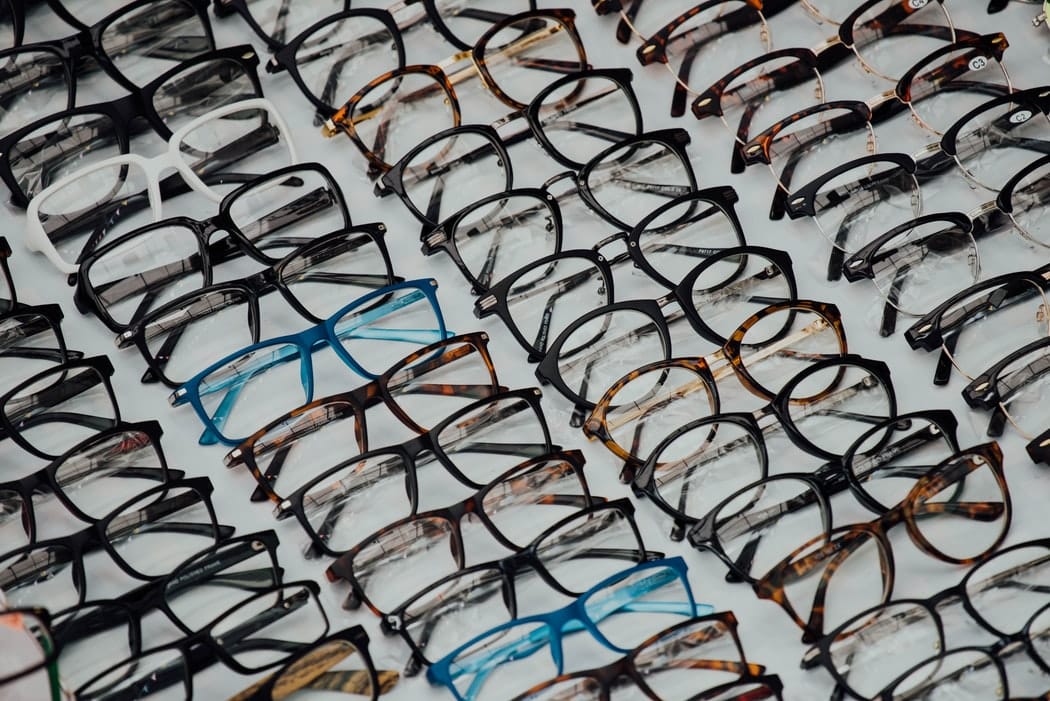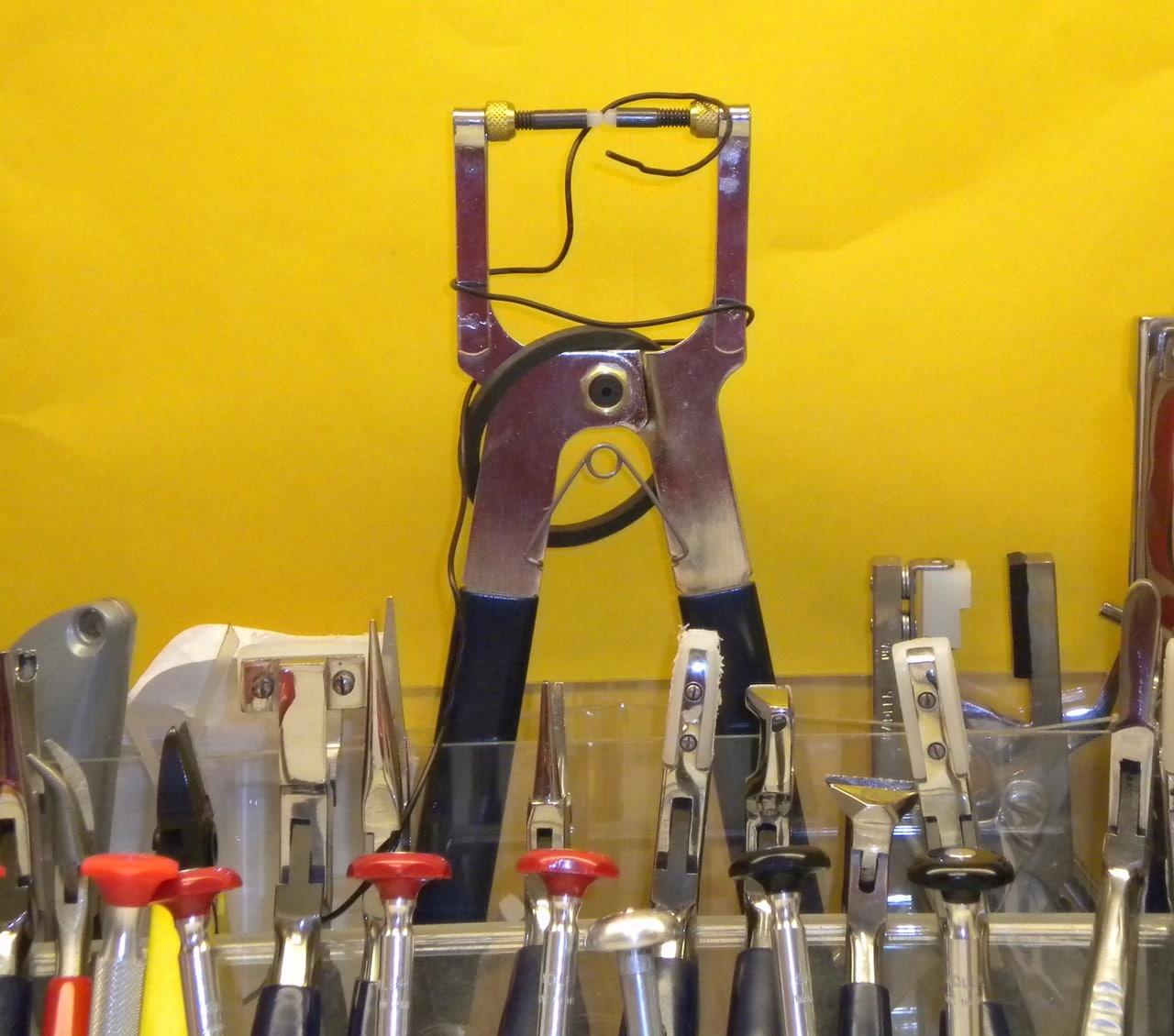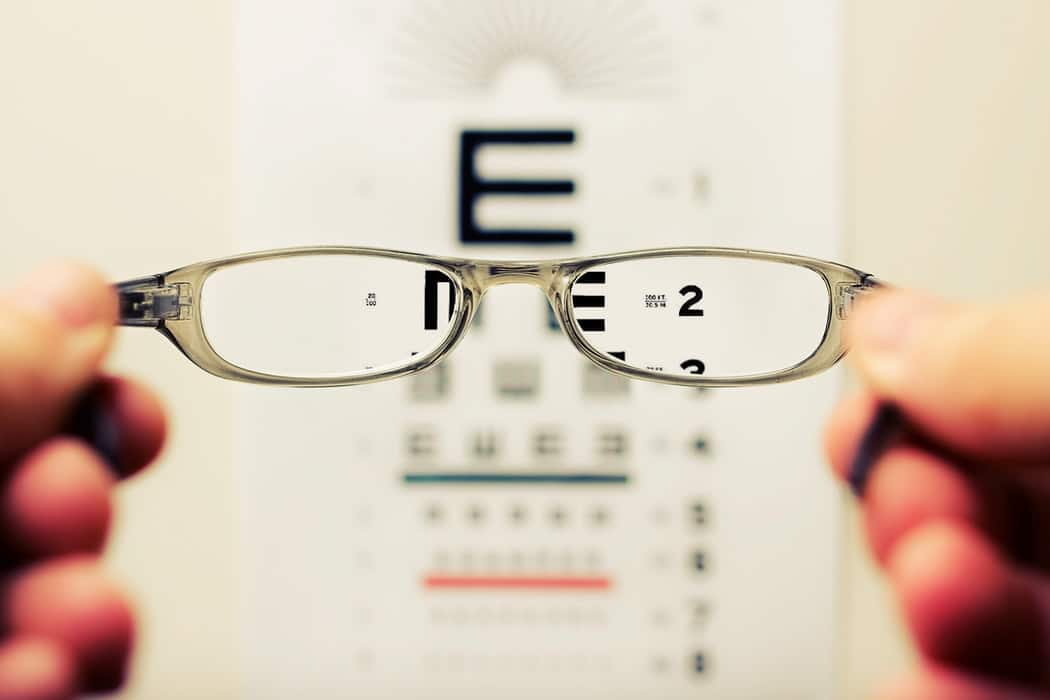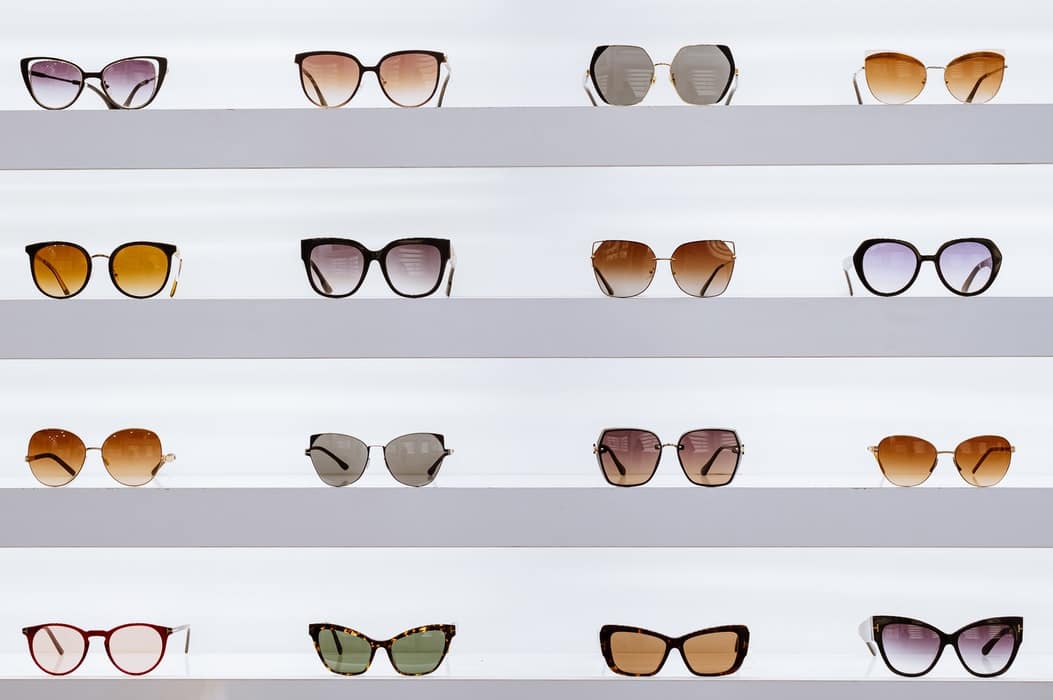Due to the amount of time people spend in front of computers, half of the world’s population will need glasses by 2050. Currently, 75% of adults have some sort of visual impairment. Out of these, 64% wear glasses.
Glasses, sunglasses, contact lenses, spectacles, and other forms of eyewear items make up the global eyewear industry.
In 2018, the value of the industry was at approximately 131 billion dollars in the United States. This figure will hit 210.8 billion dollars by 2025, indicating that increased screen time will lead to substantial growth in the years ahead.
Independent eyewear manufacturing requires you to study the market, identify your potential customers, and learn all that you can about your products.
Hiring a single company throughout will ease your journey. It’ll help you collaborate with experts and choose what’s best for your company at each point, optimizing and simplifying the process.
This guide will cover what you need to know about the independent eyewear manufacturing process, from capital investment to finding a factory that can cater to your unique needs.

Perfect Your Idea
Design is the first step in the eyewear manufacturing process and the most complicated part of the procedure.
When creating a beautiful and user-friendly design, you must consider the following factors.
1. The Concept Must Be Innovative
Begin by looking at the prevailing giants of the industry.
In 2018, the primary optical manufacturers in the United States were Luxottica and Vision Source. Luxottica is the largest eyewear company in the United States and around the world. Their brand portfolio includes Oakley, Persol, and Ray-Ban.
Many small and medium-sized businesses are also thriving. Shwood, Anna Karin Karlsson, and others have found their niche in the eyewear industry without competing with the big boys. They’ve done an excellent job of letting their products speak for themselves.
Research trade magazines in the industry, specifically those that concentrate on emerging trends. They’ll help you assess the uniqueness of your concept and gain a better understanding of current business trends.
Here are the most popular trade journals like Spectr, Invision Mag, and 20/20 Mag.
Conduct fieldwork by visiting a variety of outlets, ranging from massive retail stores to independent local shops. Plan your trips to align with the launch of new eyewear collections. Take note of the packaging, frame styles in various price ranges, and how they’re marketed.
Take a look at eCommerce. A successful online shop has:
- user-friendly website
- seamless cart navigation
- mobile optimization
- online advertising
- quality product
Online retailers drive product revenues by technological developments, such as introducing visualization software to try products online.
Online websites provide accessibility and reduce delivery times, which will help drive the business landscape forward. Furthermore, these stores sell items at low prices, boasting massive promotions.
However, due to the nature of the product, most consumers still prefer physical stores.
2. Make Sure Your Concept Is Marketable
After you’ve established your product’s viability, the next step is to determine whether your new product is marketable.
Your design must meet a wide variety of requirements to be considered feasible.
To gain a greater understanding of your idea, use the following as your guide.
First and foremost, the product must be safe, durable, and meet unfulfilled market demands.
Consider the industry itself next. Competitive pricing, domestic and international rivalry, and growth opportunities are all considerations.
You need to keep some industry criteria in mind, such as current market trends, be user-friendly and have an appropriate profit margin.
If you want to make eyewear, it has to be safe, long-lasting, and have a broad consumer base.
To learn more about the challenges of developing a marketable concept, go to Understand Your Market, a nonprofit resource managed by the US Small Business Administration.
The Vision Council’s optical market research is also an excellent resource for this purpose. They have a wide variety of quarterly, annual, and detailed product market reports that will give you complete knowledge of optical market dynamics as well as customer perceptions and behaviors.
As market developments, technology, and customer behaviors change, they also prepare special interest reports on related matters.
Growth potential in eyewear refers to trendy frames, sunglasses, and fashion-centric pieces.
Ensure that you can expand your concept and build an entire line of accessories based on the same USP. Varying colors, themes, and switching up designs based on current fads might do the trick. That will help pique the interest of significant eyewear retailers. If an eyewear store can introduce new accessory lines every season, it will be easier to sell your product idea to them.

3. Ensure Your Concept’s Cost-effectiveness
Measure cost-effectiveness by building a prototype. You can use the costs incurred in making the prototype and make an educated guess based on various accounting methods.
Having an accurate estimated cost and distribution is critical before moving forward with large-scale production. That can be done using a variety of accounting methods. Contacting our specialists can help you in calculating these costs.
However, understanding the eyewear manufacturing process is crucial to help in calculating a product that is competitively priced and has high-profit margins.
There are two primary components of the manufacturing process: lens manufacture and frame manufacture.
Manufacturing the lens is arguably more technical, requiring unique configurations for each. However, the manufacturing of eyeglass lenses is often robotic.
The data needed to manufacture the individualized lens is based on specific orders. Semi-finished lenses are available in bulk. The front surface of the semi-finished lenses for the left and right eyes already has optical power. Only the back surface needs to be machined.
To create the prescription glasses, you must consider the following.
Blocking adds a protective layer to the lens’s surface. That’s an essential phase for the lenses to be fastened and processed correctly in the machines.
Special lenses mold the lens and give it the desired shape and prescription after blocking. A 5-axis CNC system is used, which takes about 90 seconds to establish the correct form and prescription for the wearer. Three separate steps happen, the lenses are roughened, a general shape is created, and tens of thousands of machining points are embedded using a natural diamond.
Machines polish the surface, but the optical properties remain unchanged.
The lens is carefully removed from the blocker and cleaned. At this point, lenses are tinted. Glass lens tints are coated in metal oxide layers, while plastic lenses are dipped in dye.
The lenses undergo coating, which is crucial to make the lens scratch-resistant and long-lasting. This coating is added as a lacquer to the plastic lens, strengthening it. Glazing fixes the lens into a frame.
The second component, frames, are relatively more straightforward to manufacture. They can be made of either metal or plastic, and each material has a unique manufacturing process.
Both materials are molded into frame shapes using precision machinery.
Metal glasses typically end up being wire, flat, or often a mixture of the two. The wire moves through precision machinery that crimps and bends it, turning and shaping it into frames.
Injection and acetate are the two most common forms of plastic frames. Injection plastic is made by melting tiny plastic beads and then injecting them into a mold. Acetate is made into a sheet for cutting and shaping purposes.
4. Follow Safety Regulations
The Vision Council has a detailed guide on safety standards for different types of eyewear. Details include:
- regional standards
- age-related specifications
- prescription-based eyewear
- fashion accessories
- use of chemicals in contact with skin
5. Make Sure Your Product Is Legally Protected
The first step in ensuring legal safety is to conduct a patent search.
Patent lawyers are qualified to conduct patent searches, including searching several databases for prior patents on a given idea.
Obtaining a patent yourself takes a long time because it’s a complex process, which is why we don’t suggest you seek professional help.
Since eyewear stores may have patented styles that aren’t yet available on the market, this phase is critical to your research.
Classify Your Core Demographic
Determine the gender and age group and other hobbies and interests that your target audience likes. That’ll help you concentrate your marketing and packaging efforts on a look that will cater to them.
That will also assist you in determining a fair production cost and competitive price range.

Design Your Eyewear
When you have a perfect vision and a target demographic in mind, you can start creating. The steps in the list below will help you better navigate the journey of learning how to manufacture eyewear.
1. Organize Your Concept During A Brainstorming Session
Now is the time to finalize the product’s detailed features.
You want to get all of your plans down in writing so that you can work through them and determine what to do next. For this session, we recommend using the competitive market analysis as a yardstick.
The following list can be used as a template to help you organize your brainstorming session:
- Your product’s desired outcome and the spirit you want your company to represent are summed up in your mission statement and slogan.
- Your unique selling proposition (USP) and how you plan to achieve it.
- What is a reasonable price for your product?
- Placement – this refers to where retail locations (physical stores, online stores, malls)
- Promotion – your ad strategy, as well as the target audience.
The brainstorming session will help you create an innovative guideline for the rest of the project.
2. Draw Initial Sketches
You can either employ a skilled artist or do it yourself to create sketches for the product. To make sure you don’t miss anything, use the brainstorming session as a reference.
Consider features such as scale, color, and possible variations in future designs.
3.Design a 3D Eyewear Model
You can start designing a 3D model once you have an initial drawing. Artists work with CAD (Computer-Aided Design) software to create a digital model.
This process can take anything from one to seven days, depending on the artist.
You may also use tools such as Zbrush to build a 3D model on your own, but we suggest enlisting the aid of a professional.
Create A Sample Product
Since eyewear manufacturing requires expensive and technical machinery, you’d be better off contacting companies that specialize in prototype manufacturing. They can easily create prototypes using state-of-the-art machinery and processes to test the design before committing to production.
Not only will this provide you with a physical model of your design, but it will also provide you with a cost estimate.

Narrow Down A Suitable Factory
For mass manufacturing, you must locate a compatible factory.
You have the option of working with retailers or contacting a manufacturer directly. Retailers are great if you want to focus on the creative side of things, whilst hiring manufacturers allows you to control the production line.
Retailers already have connections in the manufacturing industry, and if they agree to work with you, they can take over the operation. However, you’ll have a lesser artistic say over the process.
You can start commercial production with the aid of local and international manufacturers. Local suppliers are easier to manage due to reduced distance but are more expensive. Outsourcing is less expensive, but visiting the plants for monitoring is hectic.
Working with a well-known retailer will help speed up this search due to their long-term agreements with wholesalers. They also have connections with factories equipped with a range of machinery.
Independent producers can outsource this process to factories in other countries. Trade fairs are an excellent place to start your search for a factory.
Supply Chain
The supply chain consists of the following parameters:
1.Plan
Before mass production, you must flesh out your idea, create samples, and find a factory suited to your needs.
2. Source Raw Materials
Find quality raw materials and build strong connections with suppliers.
Your raw material expenditures will determine both quality and profits.
You’ll need the help of experts in supply chain management to match your requirements to what’s commercially available. This can be challenging, so we recommend working with our team of professionals here at Gembah who can assist you in this step.
The investment-to-profit ratio analysis used in competitive bidding is used to obtain the required machinery, resources, and services to initiate the production line.
3. Production Line
To manufacture a product, you’ll need supplies, equipment, analytics, and other technical expertise. Professionals working with us at Gembah can facilitate this aspect.
The following factors are vital:
- Predict the future demand for your product
- Manage the bottleneck process efficiently
- Analyze productivity and performance regularly
- Throughput analysis and overhead rate
4. Delivery
The delivery mechanism uses one of two factors: wholesale dealers or retailers.
Wholesalers are crucial because product outflow is dependent on them. Establishing successful relationships and deciding delivery timings and procedures can be complicated if you work independently.
Retailers are your point of contact with consumers. Their engagement can propel your sales by a significant amount.
Incentives can improve product placement and enhance profit margins.
5. Fulfill Customer Demands
The customer is the last piece of the puzzle in the eyewear manufacturing process.
A comprehensive analysis is required to determine the rate, promote sales returns, product placement, and adhere to customer requirements. A thorough analysis of consumer behavior, a detailed examination of CRM data, and other factors decide each step.
You must have a procedure in place in the event of defective products or consumer returns. That helps build customer satisfaction and loyalty, which is especially beneficial for eyewear which is essential for most customers.

Take Immediate Action
The complex nature of independent eyewear manufacturing can be frustrating for those new to the business.
That is where services like ours can help you build a successful business:
Our team will assist you:
- Optimize the entire process by leading you over each phase’s potential pitfalls.
- Have a team of experienced developers on hand to support you in creating a fantastic product.
- Determine a factory that is ideally suited to your requirements.
- To maintain the integrity of your product, timeliness of deliveries and, keep a close eye on the eyewear manufacturing process.
- Avoid common blunders such as lack of foresight.
- To ensure that your company succeeds by creating a product that is worth investing in.
- Increase profit margins by avoiding money waste.
- Examine the market to ensure that your product is the best.
- Produce outstanding eyewear on time to build a loyal customer base.
If you have a unique eyewear design that you can’t wait to show the world, get started today with us for a lucrative journey into eyewear manufacturing.



